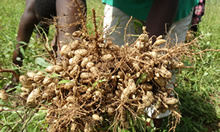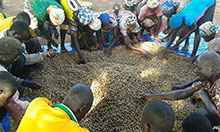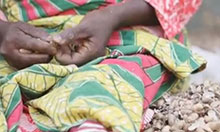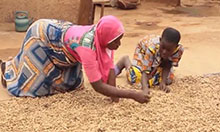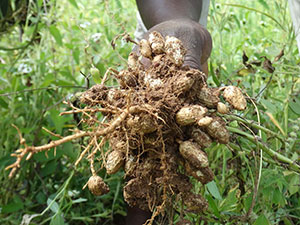
Background
Groundnuts are a major legume crop in the northern regions of Ghana, where they provide important nutrients for physical development. When handled improperly, however, groundnuts can be highly toxic to humans. Certain types of molds that grow on groundnuts can produce aflatoxins—toxic compounds which can cause immune-system suppression, gastrointestinal dysfunction, growth retardation, liver disease, and cancer.
SPRING/Ghana is working to reduce aflatoxin contamination in groundnuts. Our strategy is to create awareness among groundnut farmers on aflatoxin management and control through Farmer Field Schools facilitated by agriculture extension agents (AEA) from the Ministry of Food and Agriculture.
As part of those efforts, we produced a video drama on aflatoxin for dissemination in SPRING project communities. The video covers the characteristics of aflatoxin contaminated groundnuts, possible effects of their consumption, and preventive measures to reduce contamination.
Overview of the Aflatoxin Video Drama
The video drama provides information on farming, harvesting, drying, and storage practices that expose groundnuts to aflatoxin contamination, characteristics of contaminated groundnuts, and recommended disposal methods. In the video, an agriculture extension agent is shown presenting this information during a workshop.
Two families are depicted in the video: the first, referred to here as the “adaptive family,” demonstrates the recommended practices. The second family, referred to here as the “non-adaptive family,” does not practice the recommended agronomic and consumption practices discussed during the workshop. The drama concludes with a summary of the recommended agronomic practices.
To view the full job aid, please download the file above.
